Memory Frequency Scaling in SFF Systems: An Investigation with SO-DIMMs and Coffee Lake
by Ganesh T S on November 28, 2018 8:00 AM ESTDRAM Options for the ASRock DeskMini GTX (Z370)
There are a number of DDR4 SO-DIMM kits compatible with the ASRock DeskMini GTX. In addition to the frequency, the timing parameters / latency numbers also influence the performance. For our evaluation today, we are going to look at four different options with three different kits:
- Kingston HyperX Impact DDR4 SO-DIMM 2x8GB @ 3066 MT/s, 20-22-22-42
- Kingston HyperX Impact DDR4 SO-DIMM 2x8GB @ 2933 MT/s, 17-19-19-39
- Team Group T-Force Vulcan DDR4 SO-DIMM 2x8GB @ 2666 MT/s, 18-18-18-38
- Team Group T-Force Vulcan DDR4 SO-DIMM 2x8GB @ 2400 MT/s, 15-17-17-35
Out of these configurations, the HyperX Impact ones were both from the same kit rated for operation at up to 3200 MT/s. Unfortunately, the ASRock DeskMini GTX refused to boot at 3200 MT/s. However, setting that XMP profile and manually tweaking the frequency to 3066 MT/s enabled the system to operate normally. The two T-Force Vulcan configurations were enabled using distinct kits.
Kingston HyperX Impact [ 2933 MT/s, 17-19-19-39 ] [ 3066 MT/s, 20-22-22-42 ]
The Kingston HyperX Impact HX432S20IB2K2/16 SO-DIMM kit used in our review supports two XMP profiles - one at 2933 MT/s with a 17-19-19-39 timing, and another at 3200 MT/s with a 20-22-22-42 timing. While the former profile was a one-click process in the BIOS to activate, the latter caused some issues and had to be run at 3066 MT/s. We could have spent more time optimizing the latency numbers for the 3066 MT/s operating point. However, keeping in mind the number of benchmarks to process, we decided to make do with minimal changes to the BIOS after the XMP activation.
AIDA64 includes a quick memory benchmark that provides some basic bandwidth and latency numbers to ensure that the kits are operating as expected.
At 3066 MT/s, the RAM-to-RAM copy (representative of both read and write speeds) comes in at 36924 MBps, and an average latency of 54.6 ns.
The relevant BIOS screenshot for the 2933 MT/s configuration are provided below.
The AIDA64 benchmark for the 2933 MT/s configuration shows lower read and write bandwidth numbers compared to the 3066 MT/s configuration. However, the copy benchmark comes in a tad higher at 37685 MBps, and this is in part due to the 51.6 ns latency metric (compared to 54.6 ns for the DDR4-3066 configuration).
The kit is currently being sold for $168.
Team Group T-Force Vulcan [ 2666 MT/s, 18-18-18-38 ]
The Team Group T-Force Vulcan TLRD416G2666HC18FDC-S01 SO-DIMM kit supports one XMP profile at 2666 MT/s with a 18-18-18-38 timing.
The AIDA64 Cache and Memory Benchmark numbers are presented below. The RAM performance in terms of bandwidth is a bit lower than the DDR4-3066 and DDR4-2933, as expected. The tighter timing numbers (in terms of clock cycles) are unfortunately not able to make up for the loss from the frequency component, and the latency ends up being slightly worse at 55.7 ns.
The 8GB member of the kit is currently being sold for $65. The kit itself doesn't seem to be available for a reasonable price at any e-tailer in the US, but, it is fine to buy a couple of the 8GB modules for use in a system. In our pricing table, we have assumed that this kit costs $130.
Team Group T-Force Vulcan [ 2400 MT/s, 15-17-17-35 ]
The Team Group T-Force Vulcan TLRD416G2400HC15BDC-S01 SO-DIMM kit works out of the box at 2400 MT/s with a 15-17-17-35 timing. It supports a single XMP profile. With all Coffee Lake systems supporting DDR4-2400 at the minimum, it doesn't need to. However, the XMP support is useful for older platforms.
The AIDA64 Cache and Memory Benchmark numbers are presented below. As expected, this base frequency configuration comes in with the lowest bandwidth numbers and highest latency among all the tested configurations.
The 4GB single SO-DIMM version in this family is currently being sold for $37. No current listing for the 8GB kit could be found. In our pricing table, we have assumed that the kit being evaluated at 2400 MT/s costs $130, though it has got to be lower than the 2666 MT/s kit in retail pricing (as it is the set with the lower performance in the T-Force Vulcan DDR SO-DIMM product line).
A note about the performance numbers from the artificial AIDA64 memory benchmark - the bandwidth numbers are as expected, varying from 35043 MBps for the DDR4-2400 kit to 43377 MBps for the DDR4-3066 kit. The latency numbers have a surprise, though - the best seems to be 51.6 ns for the DDR-2933 kit. In the rest of this review, we will see how these numbers influence day-to-day usage and computing workloads using both artificial and real-world benchmarks.


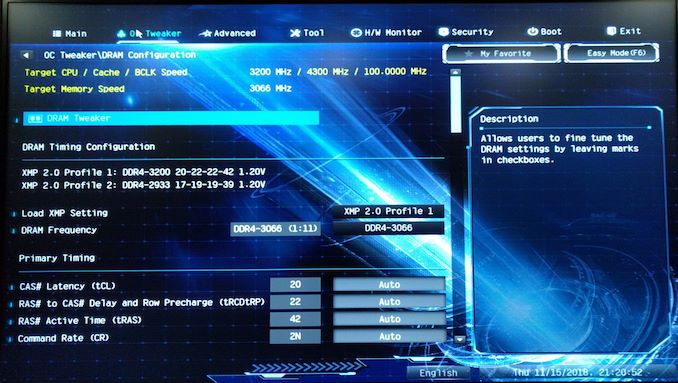
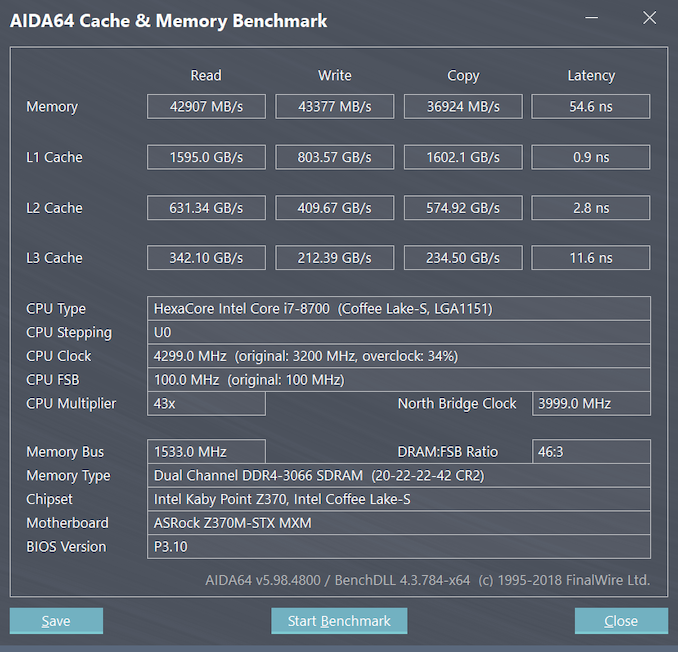
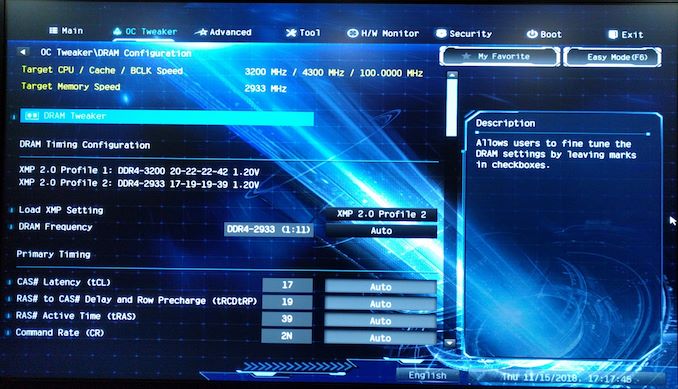
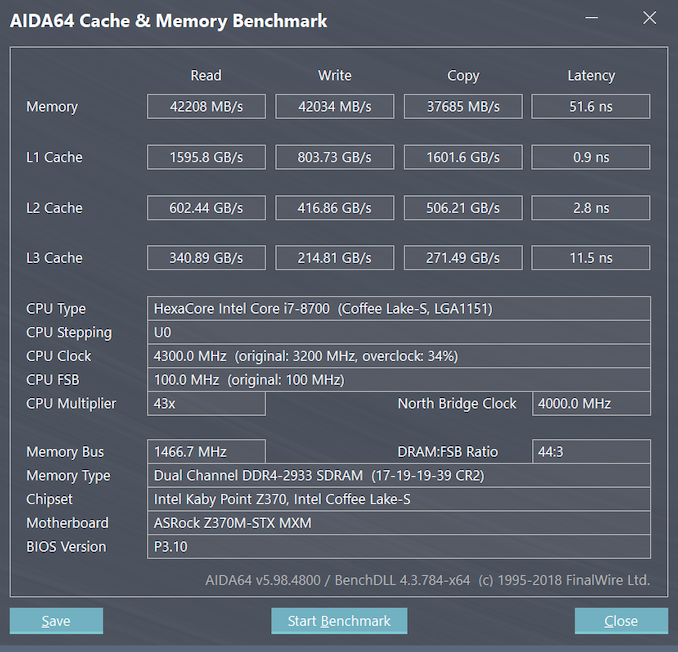
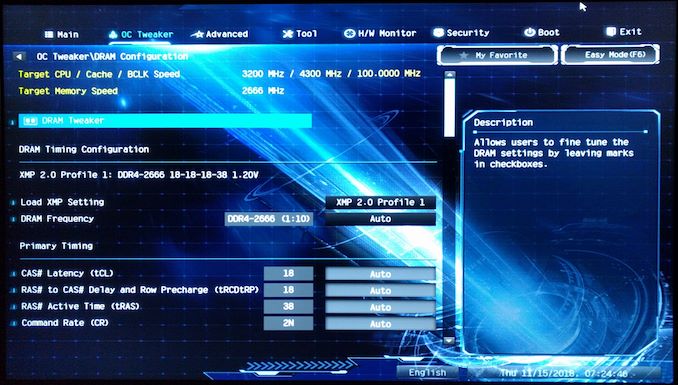
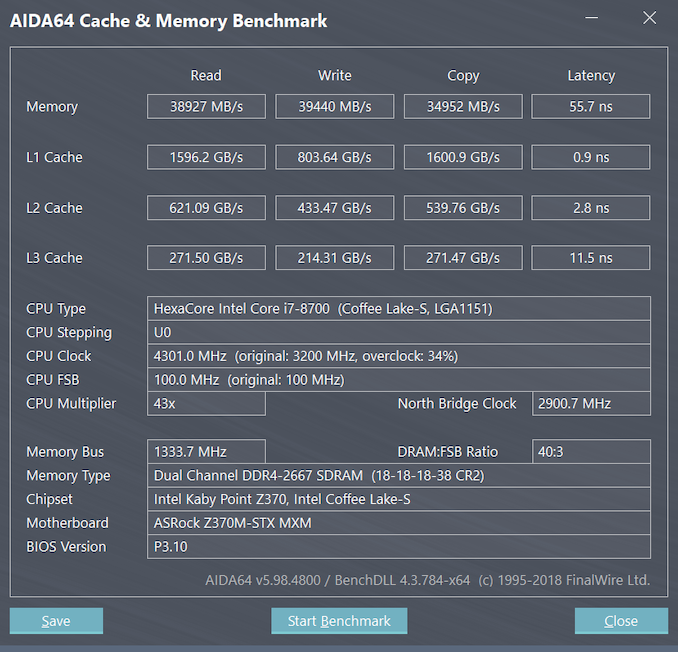
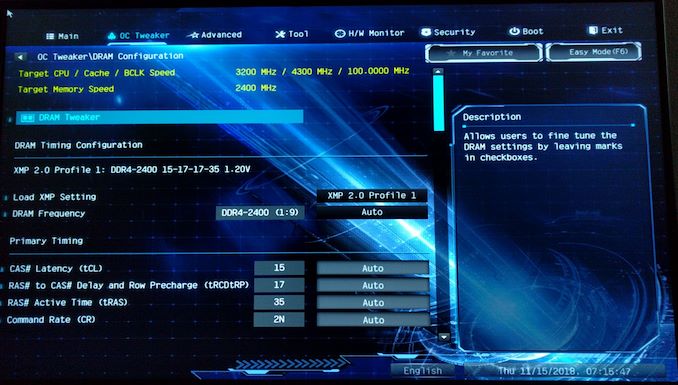
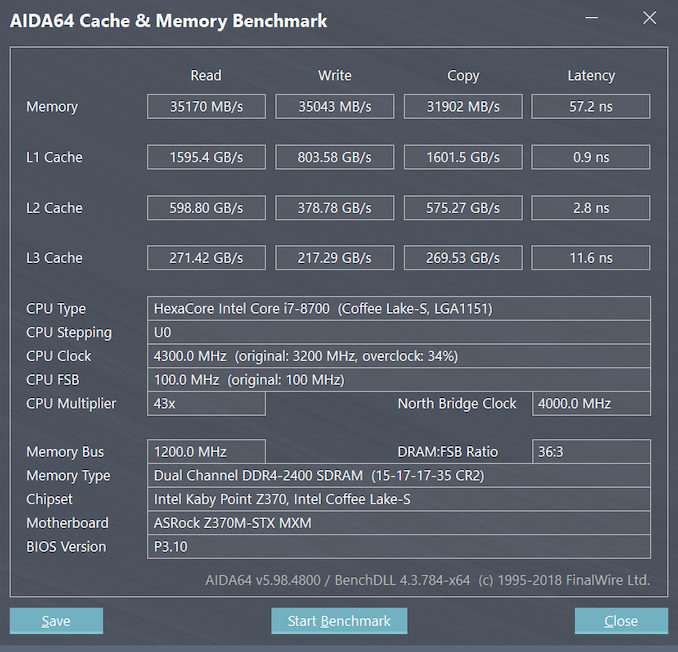








25 Comments
View All Comments
cygnus1 - Wednesday, November 28, 2018 - link
How does anyone look at those memory benchmarks and justify buying anything other than the cheapest RAM that meets minimum spec?Yuriman - Wednesday, November 28, 2018 - link
Pretty much agree. Good to know, though.nwrigley - Wednesday, November 28, 2018 - link
Yep. The only difference for me is that I only buy Crucial. This comes from personal experience of AMAZING customer support from them.I had one of their sticks die on me once after 8 years of use. I called in and was shocked to talk to someone in the US. Since they didn't make the same RAM I had anymore, they offered to replace all 4 sticks so that I had a matching set, even though 3 of the 4 sticks were fine. And since the replacements were slower timings without heat spreaders, they offered to double the capacity to cover the difference. They upgraded me from 4x 1-gig sticks of DDR2 to 4x 2-gigs of DDR2 without me raising any fuss - this was all customer services idea. That made me a customer for life.
cygnus1 - Wednesday, November 28, 2018 - link
Yeah, I too am a big Crucial fan because of reasons like this, from my experience as well. Not quite as generous as your story, but never any kind of trouble getting support for their hardware.But these benchmarks really show that performance should not be even remotely near the top of the list of reasons to pick one RAM part over another. Brand/warranty/customer service is a real way to differentiate and justify a given price.
koaschten - Wednesday, November 28, 2018 - link
I found this handy graphic on reddit some time ago:https://i.imgur.com/lbPIkiW.png
Looking at the tested offerings, it is obvious why there was so little performance gain, the Latency/clock relations are just off the chart, for the 3066 CL20 literally.
koaschten - Wednesday, November 28, 2018 - link
source: https://www.reddit.com/r/intel/comments/9mlwbn/ram...yes, this is DIMM not SO-DIMM, but shows the differences nicely.
willis936 - Wednesday, November 28, 2018 - link
It is somewhat frustrating to see all of this work done on a case that doesn't make sense to examine first.If the original question is "When does memory performance matter to CPUs?" then the place to start is at the extreme, not somewhere in the middle. If it was found that an 8 core 4 GHz x86 processor with whatever cache architecture and two channels of memory was memory bandwidth or latency starved THEN it would make sense to start moving down the stack and identify when it is no longer a concern. The conclusion to draw from this is much less meaningful to most any reader. There are like five people on the planet choosing between more expensive and cheaper memory kits for SFF systems.
GreenReaper - Thursday, November 29, 2018 - link
Might make more sense with AMD APUs. You'd probably get a much better return from overclocking the memory than the CPU, given how bandwidth-starved they can be.The_Assimilator - Wednesday, November 28, 2018 - link
Whatever happened to ranking memory by its performance rating, to determine how objectively good it is? For anyone who doesn't know/remember, performance rating = (memory frequency / CAS latency), and higher = better.It's sad that in this day and age, my 2x8GB DDR3-1600 CL8 (with no RGB LEDs or unnecessary heatsinks) has a higher PR than any of these DDR4 kits. It's even sadder that today's reviews of memory that "overclock" it, just concentrate on pushing up the frequency instead of trying to tighten the CAS timings, because the latter is where you'll see the most benefit.
nevcairiel - Wednesday, November 28, 2018 - link
All you are calculating here is the actual latency, since CAS latency is expressed in cycles. What this doesn't account for is the actual memory speed (ie. bandwidth).Just using your formula, a 1600/8 and 3200/16 module should be equal, right? But one of those offers twice the raw memory throughput, at about similar absolute latency (ie. performance rating).
It is a good idea to keep in mind that latency and frequency interact, but not in a way you suggest. Many people look at things like 3200 CL16 and 3600 CL18 and would instinctively say that the second set has a higher latency, while in reality the actual latency is quite similar, and you get more bandwidth.